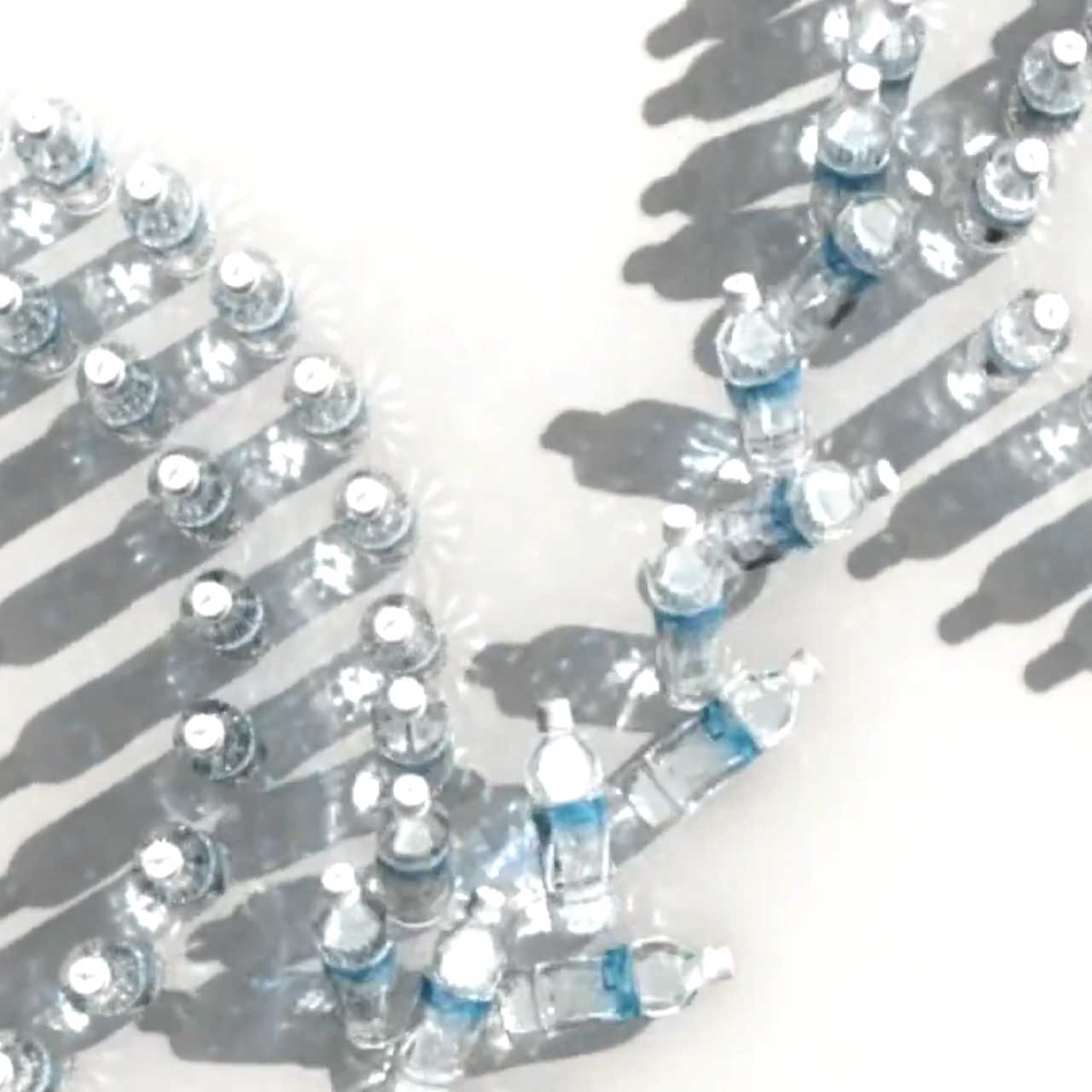
How does a 3D animation project work with AOKIstudio?
- Desire and need
- Brainstorming and concept
- Synopsis and script
- Storyboard and Animatics
- Art Direction
- Production of a 3D animated film
- Post-production of a 3D film
Desire and need
It all starts with the desire and need to communicate.
Do you want to develop your brand image, communicate about a product, a service?
AOKIstudio works with you right from the development of your ideas and concepts, which form the essential basis of any 3D film or animation project.
How do you convey your values, transmit your message in an original, relevant and seductive way, attracting audiences to your products or services?
Identifying the objectives of the 3D animation film is a key step, and AOKIstudio will work with you from this first, decisive phase onwards to ensure the overall direction of the project.
What is the purpose of 3D animation? Promote a service, provide information, sell a product? Attract the attention of potential customers? Create a buzz on social networks?
Who is the target audience? What key information should the audience remember?
Should the message be explicit or, on the contrary, be suggested in a subtle way, requiring interpretation on the part of the audience?
Let's determine and transform your needs into ideas and concepts together!
Brainstorming and concept
AOKIstudio takes part in brainstorming, which involves stimulating creativity based on identified needs, selecting from a large number of possible ideas the one that best matches the project's objectives.
The broad outlines are established, and the tone, style and message of the animated film take shape.
The film's concept also helps to guide the artistic and technical choices.
Is a live-action film more suitable than a 3D animated film? What can 3D do in addition to the TV commercial concept? Is it more appropriate to use 3D characters rather than real actors?
Will a film mixing live action and 3D get the message across differently? If so, which option should you choose? 3D characters in existing filmed sets or actors integrated into a virtual set?
In the example of the advertisement for mineral water from the company DyDo Group Holdings, AOKIstudio made a number of proposals before settling on just one idea: to stage the DYDO water bottles like dominoes in a playful and surprising world made up entirely of water bottles.
The chosen idea is then developed into a more complete concept, followed by a detailed synopsis or script.

Synopsis and script
The synopsis of an TV commercial film is a succinct summary of the main idea. It may set the tone, introduce the characters and list the key elements of the action or message.
The scenario indicates everything that happens in the ad, the actions, dialogue, transitions, sound and musical effects, etc. It provides details of every action that must be carried out at every moment of the ad. The script can also include indications on the use of 3D to reinforce the story or enhance a particular action scene, as well as specific instructions on the animation of characters and objects in 3D space, such as details on the characters' movements, their interaction with their environment or their facial expressions.
The synopsis and script are crucial to the rest of the project. On the one hand, they allow you to go into more detail about the project, but they also allow you to assess the 3D team and the skills needed to produce the film, the number of people involved and therefore the time and budget needed to complete the project successfully.
The script is the subject of back and forth between the project partners and AOKIstudio with the aim of finding a balance between the quality of the film, the production schedule and the budget.
Storyboard and Animatics
The storyboarding and 3D animatics phases follow validation of the script, production schedule and budget.
The storyboard for a commercial is a series of drawings that illustrate each shot of the advert. It is used to plan the key moments of the action and to visualise how each scene will be animated, including camera movements and the arrangement of objects and characters. It can also indicate the atmosphere and lighting for each scene.
The animatic is an animated version of the storyboard. It uses the drawings from the storyboard and is accompanied by the planned soundtrack. It allows you to see how the ad unfolds over time and gives you a better idea of the rhythm, timing and transition between scenes.
AOKIstudio produces animatics for each of its films because they are a valuable preview and dialogue tool for the various project partners.
Our expertise means that most of the time we don't make 2D animatics from the storyboard, but 3D animatics or 3D animatic. 3D animatics uses simple 3D models to represent characters and environments, as well as to visualise staging, camera movements and the position of characters and objects.
The use of 3D animatics can not only facilitate planning and visualisation, but also speed up the production process by allowing the reuse of certain elements, such as camera positions and movements, objects and characters. This ensures continuity between the animatics and the final film.
We also produce 3D animatics during pre-production for films that will not be in 3D, but in live action. In this case, 3D animatics enables us to choose the type of camera that will be used to film the real scenes, their position and movement and the focal lengths used. 3D animatics is also an invaluable tool for giving indications to the teams who will be creating the backgrounds for the scenes filmed, as well as to the actors in the film as to their position in relation to each other or the speed of their movement and displacement.
For example, the TV commercial film by Bandai Namco Entertainment features children painting the brand's logo on a wall using live-action only, but AOKIstudio created a 2D storyboard and then a 3D animatic to define the size of the wall to be built, the camera model and focal length, as well as the length of the rails for the tracking shots.
Discover the making-of of the storyboard, 3D animatics and shooting of an TV commercial film...
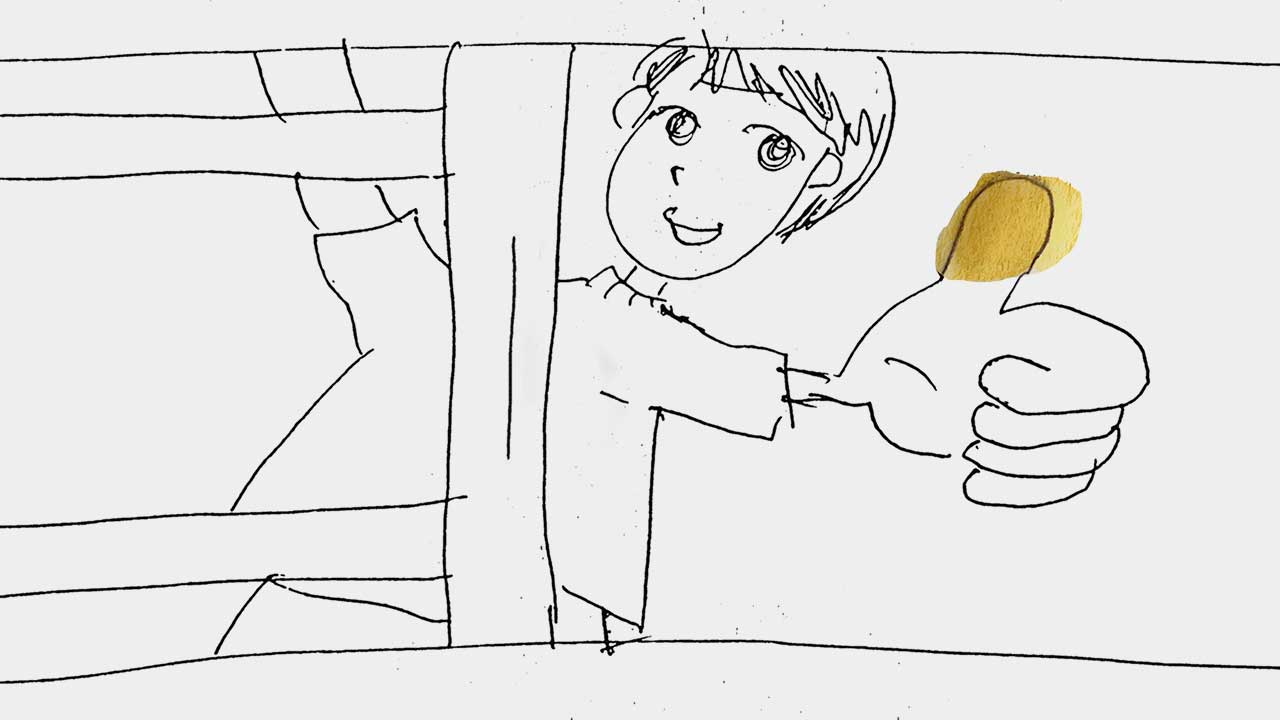
Bandai Namco Entertainment
Storyboard of the film, AOKIstudio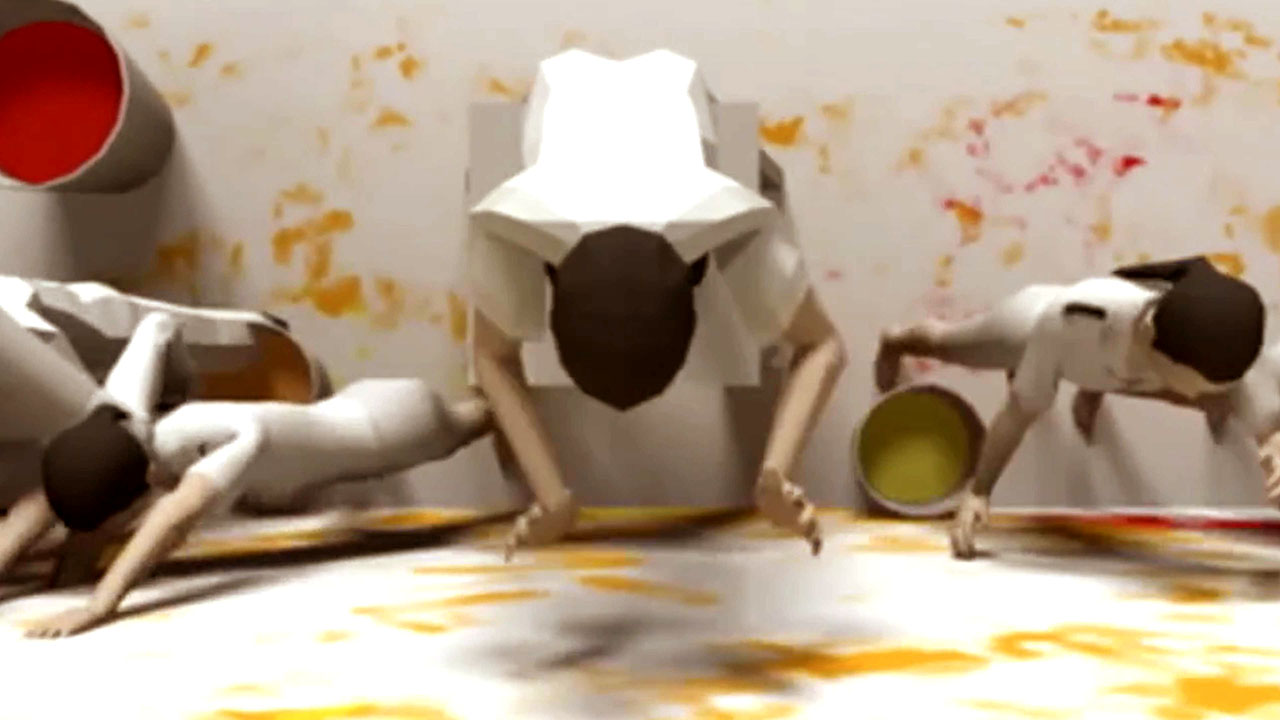
Bandai Namco Entertainment
3D animatics of the film, AOKIstudio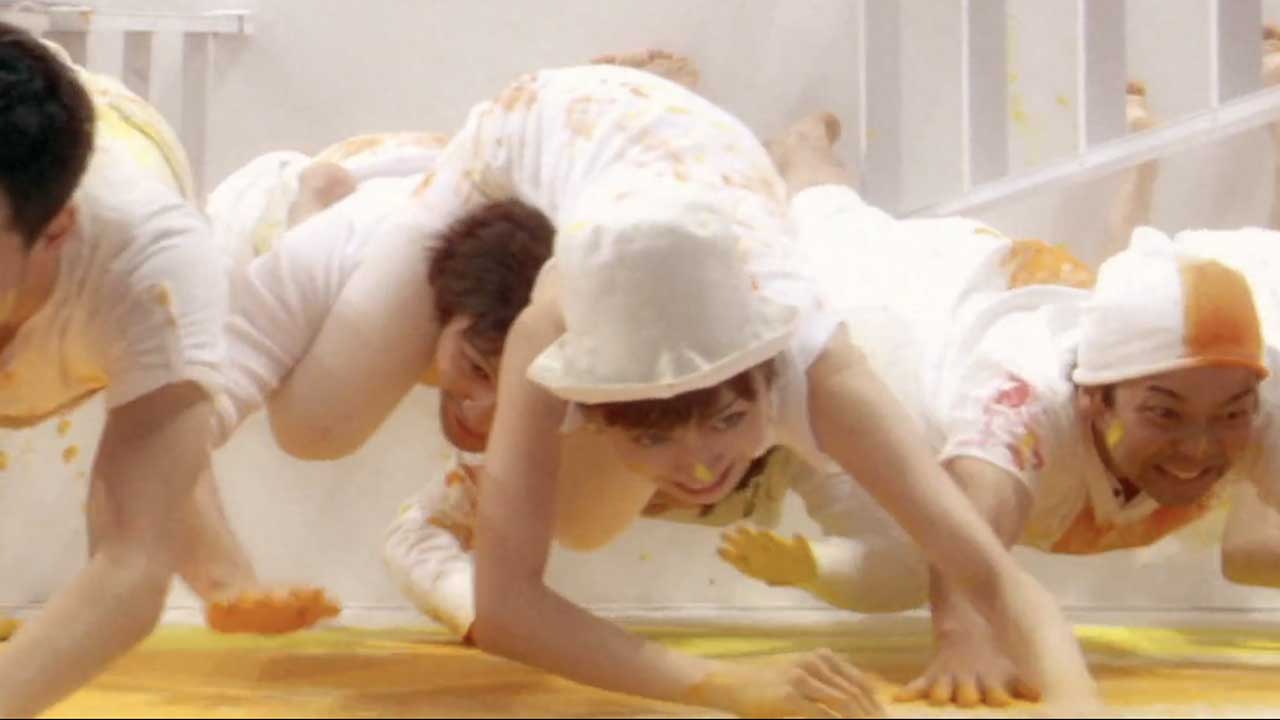
Bandai Namco Entertainment
Shooting the film, AOKIstudio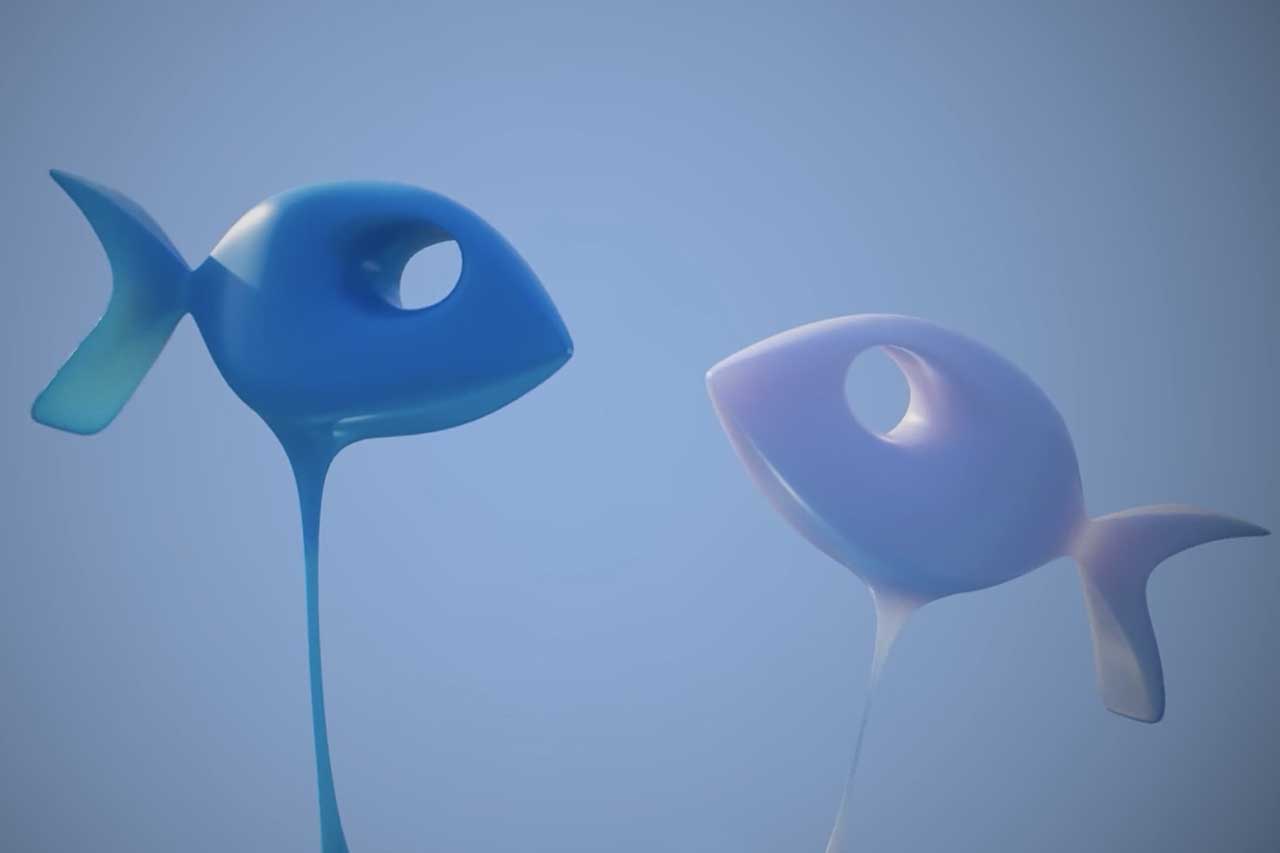
Takorama Festival
Design : Olivier Defaye, AOKIstudioArt Direction
Art direction refers to the creation and supervision of the film's overall aesthetic.
Particularly important in animated films, it has a direct influence on all visual aspects of the film.
At AOKIstudio, art directors define the mood and graphic style of a 3D animated film, but are also responsible for designs, character design, sets and props.
They therefore work closely with the production team, such as the artists responsible for 3D models, textures, lighting, but also animators and specialists in special effects and post-production.
Art directors at AOKIstudio create visual worlds for films using hand sketches or 3D images. The use of 3D images, such as 3D animatics, can speed up the production process by allowing the reuse of certain elements, such as 3D models, textures and lighting.
Once the visual worlds, script and 3D animatics have been finalised, production of the film can begin.
Production of a 3D animated film
The production of a 3D animation TV commercial film for television or the Internet includes all the phases required to turn the script and artistic direction into a final film. It calls on a wide range of skills and takes an average of 2 months, but can last up to 6 months depending on the complexity of the project and the length of the film.
The main phases include
3D modelling involves transforming the characters, sets and objects validated during pre-production into 3D models in a digital environment.
The layout involves determining the position in a digital environment of the 3D models.
The rigging is used to create controllers to animate 3D models.
The 3D animation consists of setting the 3D models in motion according to the scenario and the animatics.
In the case of characters, facial animation creates facial expressions and 3D simulation realistically reproduces the behaviour of specific objects such as hair and clothing according to gravity, wind or the character's movements.
Texturing involves assigning textures and materials to 3D models.
For 25 years, AOKIstudio has been regularly adding to its library of textures, created from its own photographs and drawings, and offering high-quality textured 3D models but also unique shaders (or shaders) to simulate the interaction of light sources with 3D models and effects such as shine, roughness, reflection, refraction, transparencies or translucency.
AOKIstudio regularly uses sub-surface scattering (SSS) in its shaders, which characterises the interaction of light with translucent or semi-transparent materials. During this interaction, a fraction of the light seeps below the surface of the object and propagates there before emerging at another point. This phenomenon gives materials a soft, slightly luminous visual appearance. An example of sub-surface scattering is the light that passes through our skin, giving it a reddish glow.
Sub-surface scattering, a fairly complex effect to implement, is essential for the realistic appearance of many materials in 3D rendering scenes.
Lighting consists of positioning light sources in a 3D scene. It determines the lighting atmosphere by creating areas of shadow and light and helps to highlight certain elements of the scene, directing the viewer's attention. The way in which a 3D scene is lit also plays an essential role in its realistic or stylised appearance.
AOKIstudio pays particular attention to the lighting of 3D scenes, which determines the final atmosphere of the film, and offers different directions for each project.
For this film, are we going to use point lights to represent small, distant light sources, such as light bulbs or stars? What would the same scene look like if we used a Directional Light emitting light in a single direction like the sun? What about Ambient Light, which illuminates the scene evenly and simulates overcast skies? How about an Area Light to simulate studio lighting?
AOKIstudio primarily uses Volume Light (Volume Light) to create atmospheric lighting effects. The atmospheres we're most fond of are often achieved by coupling Volume Lights and the depth of field (depth of field) obtained through 3D camera settings.
The 3D Rendering is the phase where the computer calculates and creates the final images based on modelling, animation, texturing and lighting.
The need for quality and high definition in 3D images, often calculated in 2k or 4k, leads AOKIStudio to use render farm systems (groups of computer servers dedicated to rendering 3D images) to speed up the rendering process, which would be very time-consuming if carried out on a single computer.
AOKIstudio after using Vray, OctaneRender and Arnold as render engines, is now using Corona and Redshift.
The best possible end result
AOKIstudio has had an international network of artists for 25 years, which it mobilises according to the needs and characteristics of each project.
One of AOKIstudio's distinctive features is its approach to the division of tasks. Unlike many Japanese studios, which work with generalist 3D artists capable of managing all aspects of a project, from modelling to animation and special effects, AOKIstudio operates on a European or American model of role specialisation, working with experts specialising in each field.
The 3D animators at AOKIstudio focus solely on animation, while the artists specialising in modelling deal exclusively with modelling.
In order to achieve the best possible end result, AOKIstudio has chosen to adopt the role specialisation approach, which involves using dedicated experts for each specific task. Although this approach is more complex and requires the involvement of a larger number of people, it was preferred to the generalist method used by many Japanese studios. As a result, each member of the AOKIstudio team is specialised in a specific area, ensuring the highest quality of work.
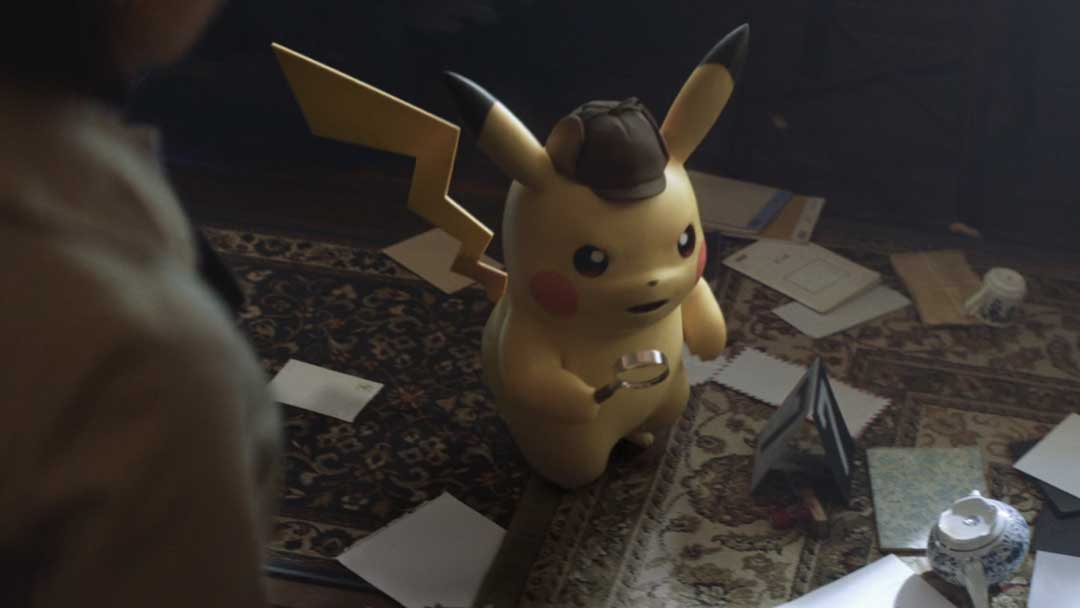
Pikachu, TV commercials
Animation : AOKIstudio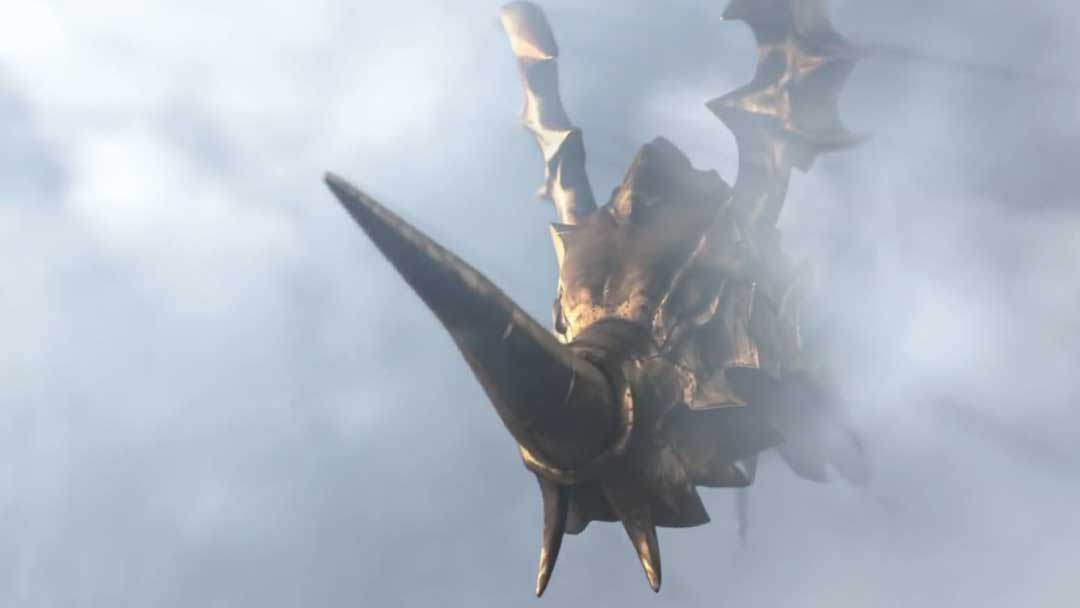
Grandblue Fantazy, TV commercials
Animation : AOKIstudio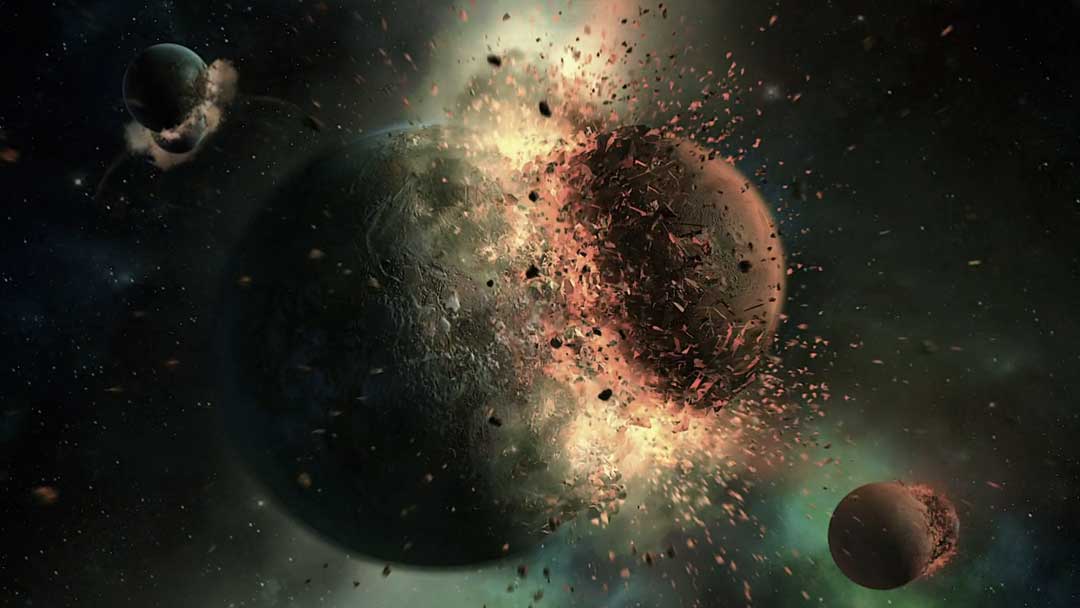
Premium Boss, TV commercials
Animation : AOKIstudioPost-production of a 3D film
Post-production of a 3D animated film includes all the stages that follow production, such as editing, adding special effects, colour grading, sound effects, music and audio mixing.
In the case of television commercials, the post-production phase is crucial to the final validation of the film.
At AOKIstudio taking charge of all the production stages of a 3D film, 3D modelling, 3D animation, 3D lighting, 3D rendering right through to post-production means that last-minute changes and adjustments can be made, which would be difficult to achieve if these stages were split between different companies.
Depending on the production needs and budgets of a 3D animation film, AOKIstudio uses tools such as Adobe After Effects, Autodesk Flame, DaVinci Resolve and Nuke in-house or in partnerships with specialist post-production studios.
Among the quality Japanese post-production studios we work with are Omnibus Japan, Imagica, Digital Garden, Cutters.

